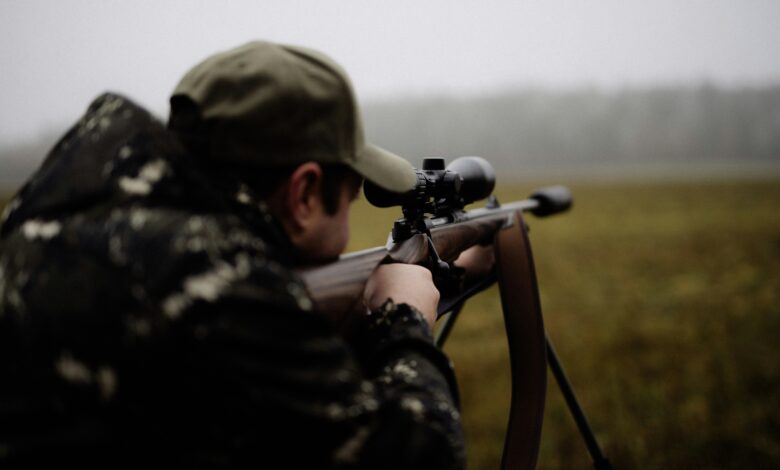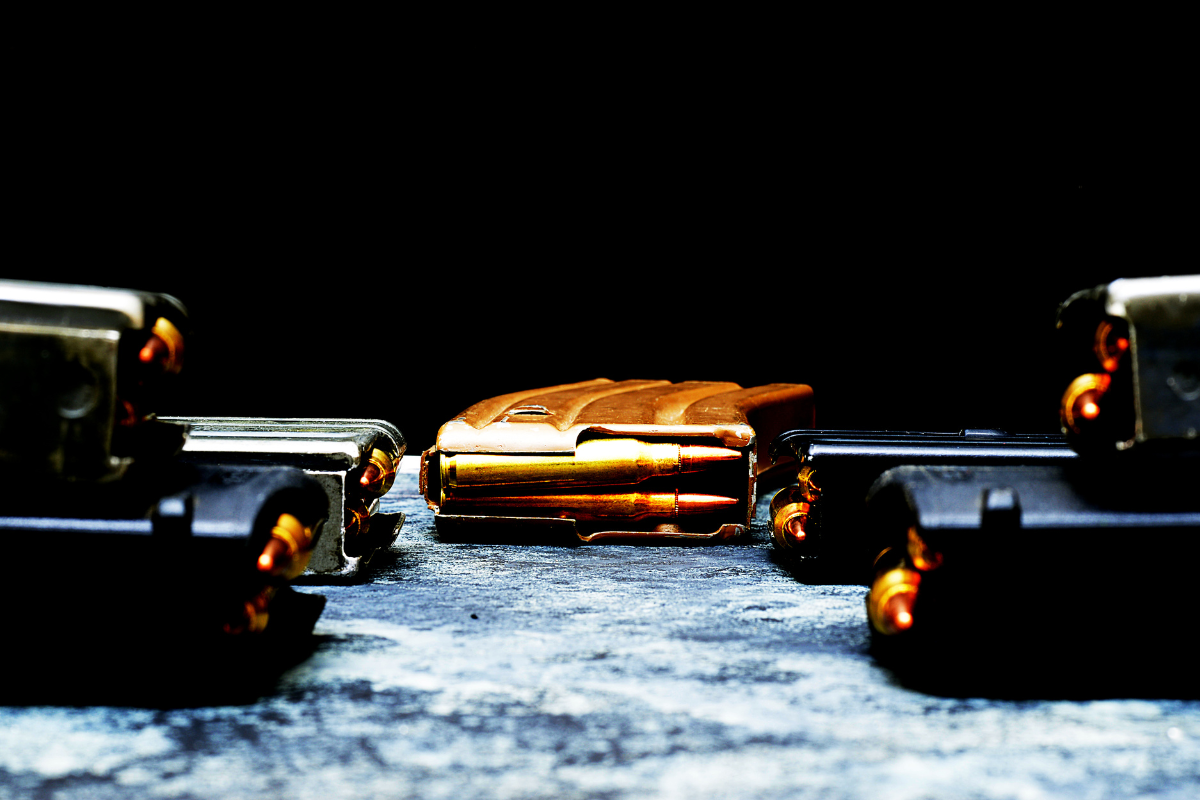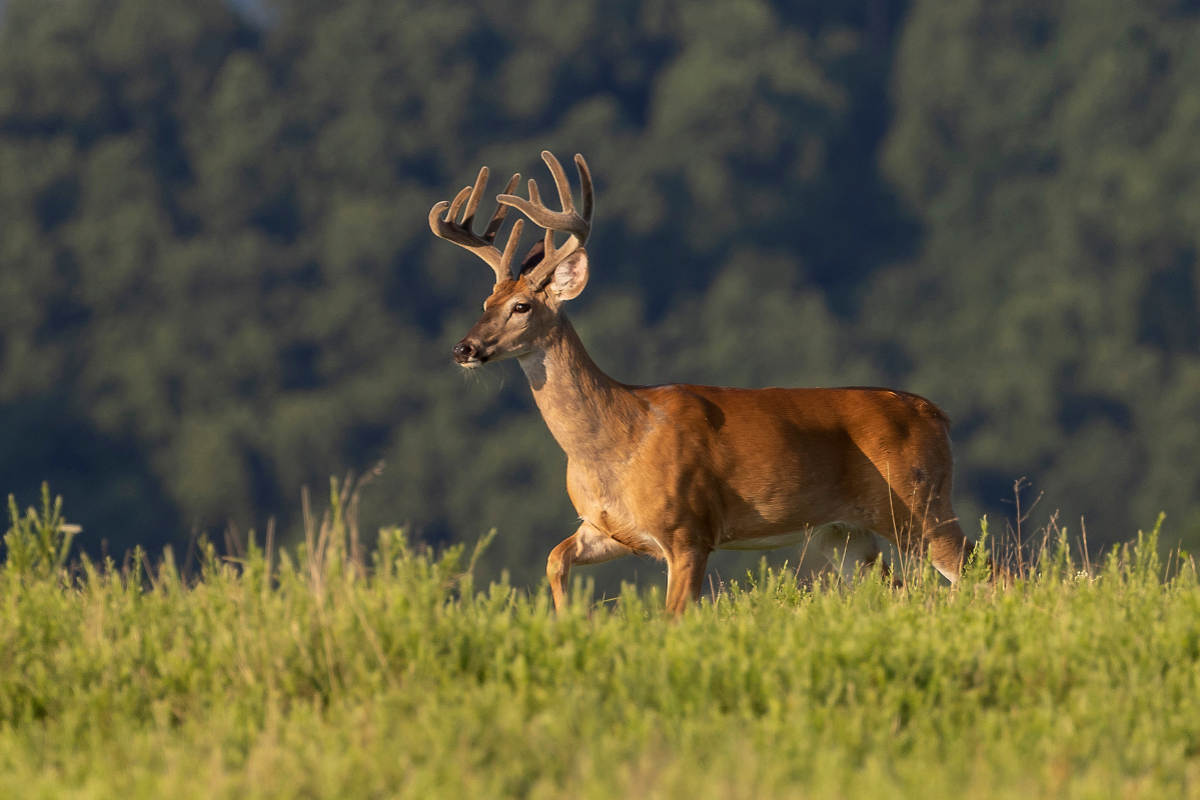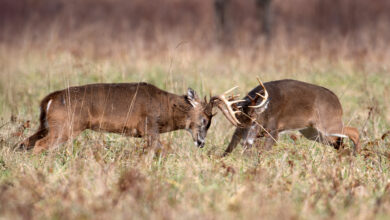223 for Deer: Can You Hunt Deer with a Remington .223?

Some debates are never settled. Consider the question ” Can you hunt deer with a 223?”
In truth, there is no definite “yes” or “no” answer to that question. In some situations, using a .223 rifle for deer hunting can get the job done efficiently. In other scenarios, it may not. And this is what gives rise to all the confusion.
Throw this question to a group of hunters, you will get a variety of opinions. While some will be horrified by the idea, others will speak of how they have inflicted multiple one-shot kills with the cartridge.
The core of the debate is about the ethics of hunting with a bullet that is not powerful enough. After all, you want to kill a deer as quickly and painlessly as possible.
But does the .223 truly lack the power needed to kill a deer with one shot?
Like so many other topics, the truth is not simple. You may have heard many fascinating facts about the .223 but many of these are myths. Moreover, bullet technology has advanced a lot in the last decades to shatter many of the myths.
Time to start digging through the details to find out the truth.
The .223 Remington
The .223 Remington has been a staple in the American shooting scene since its introduction in the early 1960s. Originally designed for military use (as the 5.56×45mm NATO), this small but mighty cartridge has found its way into the civilian market and earned a place in hunting camps across the country.
Pros of .223 for Deer
As long as you are using the right type of bullet, a .223 Rem. generates enough energy to take down a whitetail. Besides it has other advantages as well.
Ballistic Characteristics
The straight trajectory and impressive accuracy make it a dependable choice at moderate distances. Since the recoil is low, it is a good option when you need to take multiple shots.
I have seen hunters bringing down one deer with a .223 and then another one standing next to it seconds later. Besides, hunters are recovering from a shoulder injury who have successfully used the .223 ammo for deer.
In theory, the .223 Remington generates 3 to 4 foot-pounds of recoil energy which feels more like a mild vibration than a kick. In comparison, the .280 Remington generates anywhere between 17 to 18.3 foot-pounds of recoil energy. Without a doubt, less shooter fatigue is a big plus of the .223 Rem.
The exit velocity of a 55-grain .223 from the barrel is around 3,200 feet per second. That makes it as effective as heavier bullets like the .30-30 Winchester and the .243 within 100-150 yards.
The Popularity of the AR15
Note that because of the popularity of the AR-15 frame, most modern sporting rifles are built around that platform. Reports suggest that over 20 million Americans own AR-15-style rifles. If you consider that many gun owners have multiple weapons, the exact numbers can be staggering.
Now, this is not without good reason. An AR, chambered with a .223 Remington is a versatile weapon that can be used on a prairie dog as well as a deer. The ability to make quick follow-up shots makes it ideal for aggressive animals like feral hogs that can turn on you. It is also a good choice for close-quarters combat situations or as a home-defense gun.
Quite simply, a person owning an AR15, need not invest in another gun while going for a hunt. Plus, the rifle is easy to operate and the .223 is affordable enough for recreational shooting.
Remember how hunting ammunition prices skyrocketed during the pandemic? For many hunters, the .223 Remington was the best option in that period.
This popularity translates to several benefits for hunters:
- Ammunition Availability: Even during ammunition shortages, .223 hunting ammo for deer is often easier to find than other hunting cartridges.
- Cost-Effective Practice: With practice ammunition being more affordable than traditional deer cartridges, hunters can build proficiency without breaking the bank.
- Versatility: The same rifle can be used for varmint hunting, predator control, and with proper ammunition selection, deer hunting.

Advancements in Bullet Technology
A major change that has made the 223 rifle more suitable for deer hunting is the advancement in bullet technology.
Ammo makers have developed .223 bullets specifically to hunt deer. While a .223 bullet may not have been effective on deer in the past can deliver a killing shot today. The good news is, they keep getting better.
Bullet design is a complex science and is a combination of shell dimensions and interior ballistics. With .223 Bullets, makers like Federal are using superior-grade hunting projectiles to enhance penetration and killing power. A modern 62-grain .223 hunting round can penetrate deeper and have enough energy to kill a deer at distances between 100-150 yards.
Take the Barnes Triple Shock from Federal as an example. The bullet can retain almost 100 percent of its weight on high-velocity impacts. Likewise, the Hornady GMX retains upto 95 percent of its weight and can expand almost 1.5 times its original diameter. This results in good penetration and maximum organ damage.
During the deer rutting season last year, I shot a whitetail standing broadside on a property edge with the Federal .223 from 150 yards. The buck shot forward like an arrow and dropped dead after covering around 50 yards. The bullet had penetrated deep and ruined its lungs upon expansion.

Cons of .223 for Deer
Now that we have discussed all the pros of the .223, it is time to think about it another way. Here are some of the problems that you will face while using the bullet.
Lack of Power
The truth is, the .223 Rem. does not hold a lot of propellant because of its small size. Quite simply, it cannot match the punch delivered by bullets like the .270 Winchester, the .308 Winchester, or the 7mm Remington Magnum. If you are going after trophy bucks, choosing a more powerful bullet is the right option. Plus, you get more room for error with those options.
Moreover, when you need to make challenging shots or a spur-of-the-moment decision to press the trigger, you need a more powerful bullet. Consider quartering-to shots as an example. The risk of hitting the guts is much higher from this angle and I would not recommend using a .223 in such cases.
Since deer move in the rain, you may need to shoot in adverse weather conditions. The .223 is not a bullet you would want to use in such situations either.
Low Range
Distance is a crucial factor for hunters. You can even use the .357 Magnum for deer hunting if the range is within 40 yards. When you are shooting on an open field, the limitations of the .223 become evident.
Being a lightweight bullet, the velocity of the .223 drops at distances over 150 yards. This prevents dynamic bullet expansion and reduces its lethality. At 400 yards, the .223 may be still moving at 1,500 feet per second, but it no longer has enough power for a clean and quick kill.
Besides, they are more susceptible to wind action as the distance increases. The .223 can work efficiently for frontal shots at short distances if you manage to hit the right spot. But I would not use it when the range is beyond 150 yards, no matter whether the target is a mule or a whitetail deer.
Note, that if you plan to stalk a moving deer through the brush, it can lead to tough shooting angles. It is best to use a.223 while shooting from a stand or a ground blind. To sum up, pass up anything beyond a standing, broadside shot at the right distance.
And remember this: you need a sound knowledge of the animal’s anatomy to deliver a killing shot with the .223.
Restrictions On Use
One big issue with the .223 is that it may not be legal in your state. Some states have also set energy benchmarks for the bullets while shooting with a .22 caliber. Make sure that you check the hunting laws in your area before using the 223 deer ammo.
Frequently Asked Questions About .223 for Deer
What is the best .223 hunting ammo for deer?
You need to pick a .223 bullet designed for medium-size game hunting, preferably an expanding bullet that can cause more damage. Check the manufacturer’s specifications to confirm.
Contrary to popular belief, a heavier bullet is not always the better choice. You need to match the bullet weight with the twist rate of your rifle. Bullets above 70 grains will need faster twist rates between 1:7 to 1:9. If your .223 rifle has a slower twist rate, you will need to use a bullet weight of 60 grains or lower.
The best way is to experiment with different bullets and find out what works best with your .223 deer rifle.
What states ban .223 for deer hunting?
Out of the 50 states in the US, 10 states have outlawed deer hunting with a .223 rifle. These states are Colorado, Connecticut, Illinois, Iowa, Massachusetts, New Jersey, Ohio, Washington, Virginia, and West Virginia.
What states allow 223 for deer hunting
Beyond that 10 states that have banned the .223 for deer, it is allowed in all other states. However, check for any bullet weight restrictions that might be there.
What is better, a 223 or 308?
The 308 bullet has a larger diameter than the 223 which makes it heavier. Hence it delivers more energy and hits the target harder than the 223. While the recoil is more, it works well for big-game animals that weigh close to 1,000 pounds. In short, it is a good choice if you want to overcome the limitations of the 223.
Can you hunt deer with a 223?
Yes, you can hunt deer with a .223 Remington under the right circumstances. The effectiveness depends on several factors including shot placement, bullet selection, shooting distance, and local hunting regulations.
With proper bullet selection (expanding hunting bullets, preferably 62 grains or heavier) and shots kept within 150 yards, the .223 can ethically harvest deer.
However, it’s important to know the limitations of this cartridge and be willing to pass on shots that aren’t ideal. Shot placement becomes even more critical with the .223, as you’ll need to hit vital organs like the lungs or heart for a clean, ethical kill.
Final Thoughts
If you are still scratching your head and not sure if the .223 is good for deer, then here is a recap.
Technically, there is no doubt that the .223 round from a reputed manufacturer can kill a deer in the right conditions. That said, you need to have the right rifle skills to get the job done as shot placement is the key.
Understand the limitations of the .223 for deer before using it. If you are not confident about your shooting abilities or planning to target larger bucks, pick something more powerful.
In the end. cartridge selection is a personal choice and the bond between hunters and rifle ammunition can get emotional at times. There are more powerful deer cartridges with better performances than the .223. But, if you have the self-discipline and confidence to go with it, the .223 will not disappoint.



